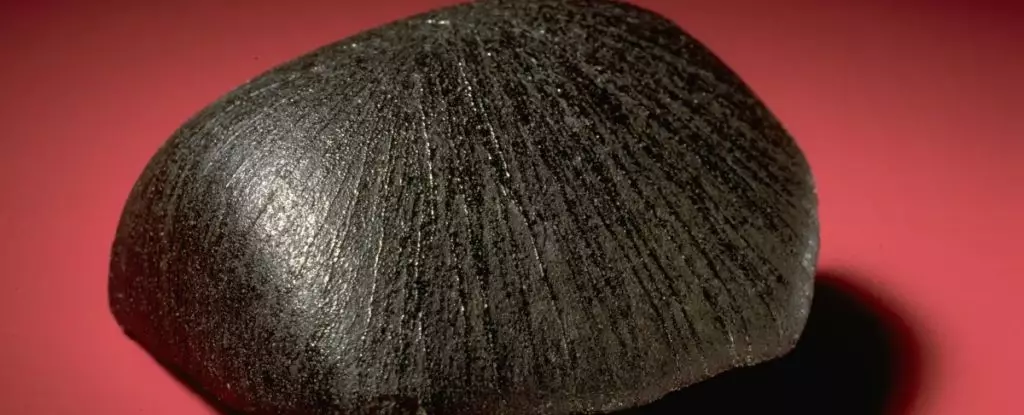The enigma of Mars as a once-hydrated planet has perplexed scientists for decades. Evidence has accumulated, suggesting that Mars was not always the desolate, dusty landscape that we see today. Instead, it was a world abundant with lakes and oceans, shaping its geology and environment in ways that remain largely a mystery. Recent discoveries, particularly surrounding the Lafayette Meteorite, have added intriguing pieces to this puzzle, illuminating the timeline of liquid water’s existence on Mars and hinting at geological activity that might still occur beneath its surface.
The Lafayette Meteorite, a fragment that traveled from Mars to Earth, serves as a focal point for understanding the planet’s aqueous history. Ejected from the Martian surface approximately 11 million years ago, it carries within it a treasure trove of scientific information. Recent analyses have revealed that certain minerals within this meteorite formed under the influence of water around 742 million years ago. This finding is not just a remarkable achievement in dating Martian minerals; it fundamentally alters our understanding of Mars’ wet history.
Geochemist Marissa Tremblay from Purdue University emphasizes that this newfound timing suggests a more complex story of water’s presence on Mars. While the evidence of ancient seas and lakes is established, linking these geological features with specific timeframes has proven challenging. The minerals indicative of liquid water found in the Lafayette Meteorite reveal that water may have been present on Mars under specific conditions, influenced by melting subsurface ice rather than standing bodies of water. This subsurface ice, known as permafrost, likely melted due to volcanic activity, highlighting a planet that may still be geologically active today.
Determining the age of minerals in meteorites involves sophisticated techniques, especially radiometric dating, which analyzes isotopes of elements like argon. In this case, researchers focused on argon found in an unusual rock type known as iddingsite, a product of volcanic basalt altered by liquid water. The dating process measures how argon isotopes, particularly argon-40 and argon-39, relate to initial potassium levels from which they derive. This method provides a window into the historical interplay between water and rock on Mars.
By analyzing a sample of the Lafayette Meteorite, researchers were able to substantiate the timeline of aqueous alteration effectively. They meticulously modeled the various factors that could influence the meteorite’s age during its long journey—from its ejection from Mars and transit through space to its fiery entry into the Earth’s atmosphere. Remarkably, their findings indicated that these processes did not adversely affect their dating outcomes. This rigorous approach demonstrates the reliability of their methods, enhancing our understanding of Mars’ geological past.
The findings surrounding the Lafayette Meteorite have profound implications not just for Mars but also for our understanding of other planetary bodies in our Solar System. The evidence linking volcanic activity with periods of moisture on Mars paints a dynamic picture of a planet that might be far more complex and active than previously thought. Recent observations from the Mars InSight lander corroborate this notion, revealing subterranean processes that hint at continued geological evolution.
Understanding when and how water existed on Mars is crucial not only for the history of the red planet but also for broader implications regarding the evolution of water on Earth. Tremblay mentions the potential for applying their dating techniques to other meteorites and planetary bodies, presenting an exciting avenue for future research. These insights could not only clarify the conditions that made Mars hospitable to water but could also illuminate the origins of Earth’s water and conditions conducive to life.
The study of Martian meteorites like Lafayette exemplifies the often intricate relationship between geology, hydrology, and planetary evolution. As technology advances and more samples are collected and analyzed, our comprehension of both Mars and the Solar System is bound to deepen. The puzzle of water on Mars may still be unsolved in many ways, but with every discovery, we are one step closer to understanding the history of our neighboring planet and its potential to host life, both in the past and perhaps in the future. The revelations from the Lafayette Meteorite serve as a potent reminder of the enduring mysteries that lie beyond our blue planet and challenge humankind’s quest for knowledge about the cosmos.


Leave a Reply